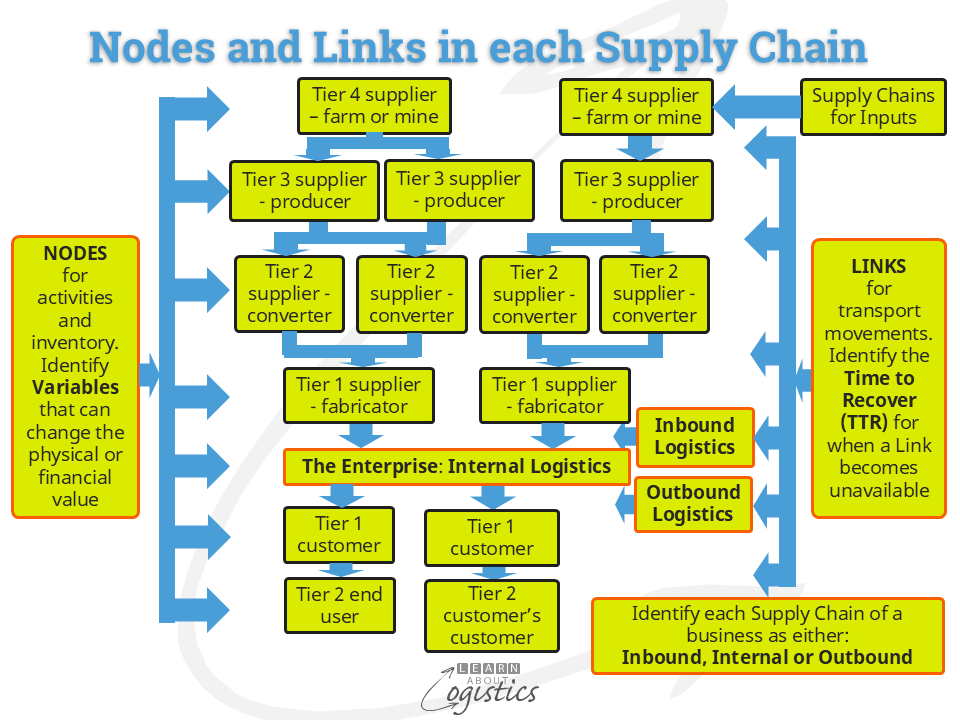Value and a Business
Business operates on the principle of value exchange, which is to provide a finished product, service, or an experience, for which customers and consumers are willing to pay money. This is for the perceived value that has been added to the purchased inputs, which must be maintained over a long period for the business to be sustainable.
To be sustainable requires building customer and supplier relationships in the value exchange, have financial viability, effective environmental action and good governance in the management of the organisation’s resources. Therefore, behind what may look like a simple exchange is internal complexity around strategies, finance, sales, operations and people.
Value and Operations
The Aim of an organisation is to provide Value for the end user. The price, delivery and payment terms (all part of Value) are agreed in various forms between customers and Sales. The value that customers expect from the supply chains of suppliers is ‘Delivery in Full, On Time, with Accuracy’(DIFOTA).
To achieve a high probability of DIFOTA requires that the supply chains Objective is to provide Availability of goods and services, sold through the organisation’s sales channels. This can lead commentators to discuss supply chains only within the sectors of ‘manufacturer/assembler to retail’ and ‘retail to consumer’. But this is a limited view, given that supply chains go back to the mines and farms, where input materials start their journey, as shown in the diagram.

Decisions concerning Availability will differ in businesses through each supply chain. It depends on the type of business and its constraints, the location and ease of supply and delivery and lead times expected by customers and provided by suppliers. The challenges differ for each business, but how a business works follows a pattern. A colleague, Dennis Hitchens, used the following guide to explain internal complexities within a business.
How a Business Works
To be in business requires five necessary conditions:
- You must Sell items – whether goods or services
- To sell items requires you either Make or Buy items
- To sell items requires to Get and Keep Customers
- To Stay in Business requires maintaining a Positive Cash Flow and Make a Profit
- To Stay in Business requires doing the things to Run the Business
Run the Business
Selling consists of Orders and Sales:
- Orders from customers become Sales when there is enough money to Make or Buy the inputs; Capacity to fulfil the order and (if required) by Inventory of products
- Items and products held in stock but not sold are called Inventory
- Orders taken but not delivered are called Backlog
Income and Costs:
- Selling a product derives Revenue
- Sales become Revenue when Orders are delivered and paid for
- Make or Buy inputs, Get and Keep Customers and Run the Business have associated Costs
- What is left over from Revenue after Costs are subtracted is called Net Profit
Cash Flow must remain positive
- The Cost to Make or Buy is largely variable
- The Cost to Get and Keep Customers is neither fixed nor variable
- The Cost of Running the Business is largely fixed
These three cost elements are called Expenses and each consists of sub-elements which in turn may also be Fixed, Variable or Discretionary, or even a combination of the three types.
There are no rules linking Cost to Revenue, so the effect is Discretionary.
Understand the business
Performance Factors include Elements and Sub-elements
- Fixed factors are expressed as numbers e.g. sales this period
- Variable factors are primarily expressed as ratios, usually percentages, which provide inferred numbers that are derived by reasoning or concluded from evidence
- Discretionary factors are primarily expressed as numbers, but may also be expressed as ratios of Sales for planning or budget purposes
Performance factors have properties
- Fixed and Variable factors, unless combined with Discretionary factors, are deterministic (whatever has happened could not have occurred any other way)
- Variable factors are constrained by Limits (generally deterministic, but not necessarily), with step function increments, which may be wholly discontinuous. Example: measurement of Inventory either side of zero are characterised by different conventions
- Discretionary factors are subject to outcomes with unknowable certainty (i.e. approximation) and require a Decision-Making process to resolve
A business system becomes complex as the properties of the performance factors interact dependently, independently and interdependently, relative to positions on a given time line. This creates emergent results that govern the current response, with future events that may influence the system being unpredictable.
Therefore, the principal process required to improve performance in a business is to Successively Improve the Approximation, where the risks inherent in the relative effects of the unknown outcomes are progressively reduced. A previous blogpost discussed risks in an organisation’s Supply Chains, which must be known to enable a reconciliation of differences when planning Operations.
Every business is a Model of this Framework, where the Model is the application of given parameters at a given position on a time line. Every instance of the Model is restricted to a narrow range of extrapolation of the parameters and time, depending on the proximity and relative effects of the Variable Limits and their associated step-function
Extend the Business Model
Complexity increases as the number of businesses grows in a supply or demand market and their systems interact. In the supply chains of a business, each Node and Link will respond to an unplanned event in its own way, generally without reference to the possible effects on other businesses. It is therefore apparent that complexity rules and supply chains cannot be ‘managed’.
Articles and podcasts incorrectly discuss ‘the supply chain’ for a business, as though there is only one flow of inputs and outputs. Instead, there are many outbound flows of products from a business, differentiated by their Coefficient of Variance Management (CoVM). Also, many inbound flows, identified by categories of items supplied. And some of the suppliers in your organisation’s supply chains are also suppliers to competitors. This structure becomes a web of connections, called a Supply Chains Network.
To provide Value for customers, the best that supply chain professionals can do is to understand the organisation’s supply markets and how the use of power & dependency by businesses in the supply chains influence supply. This requires that critical elements through an organisation’s Supply Chains, consisting of supply, lead times, capacity and inventory, are the responsibility of a unified Supply Chains group that includes Procurement, Operations Planning and Logistics.

